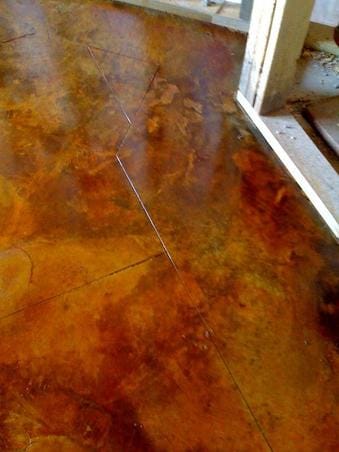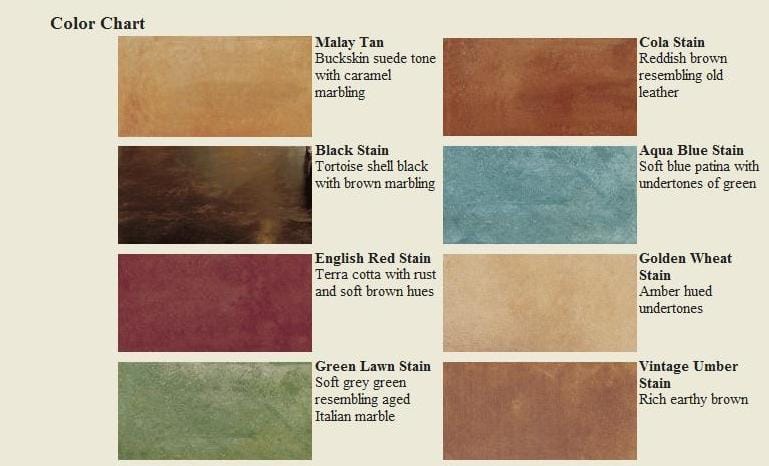|
Wondering if stained concrete is right for you? To help you decide, here are answers to common questions about stained concrete benefits, appearance, performance, and maintenance.
Why do people choose stained concrete Stained concrete offers unique decorative effects at a reasonable cost. Concrete stain does more than simply add color. It does not produce a solid effect like paint or colored coatings; stains permeate the concrete to infuse it with rich translucent tones. When treated with the same staining product in the same shade, no two concrete floors will look alike. Factors such as the composition and age of the concrete and surface porosity. Acid and water-based stains can be applied to new or old concrete. The most important consideration is the condition of the surface. The stain will not achieve full-color development |
Color Options for Stained Concrete
Colors will vary depending on whether you are using an acid or water-based stain. Acid stains will limit your color choices. Stain colors can be mixed before application to achieve a different shade or apply one color over another. Deeper color effects can be produced with a stain by applying two coats. If you want to go beyond the subtle drama and subdued color palette of acid staining, water-based acrylic stains will give you a wider spectrum of hues to choose from. Most manufacturers offer dozens of standard colors.
|
Choosing the right stain color
Regardless of what stain colors you choose, be aware of the following caveats:
|
Differences between acid stains and water-based stains
Acid-based concrete stains are made up of inorganic metallic salts dissolved in an acid and water solution. They penetrate into the surface and react chemically with the concrete to form a permanent bond. The color they impart is translucent rather than opaque, resulting in deep, rich tones and attractive marbling effects. Non-reactive water-based stains fill the pores of the concrete surface to produce a colored film or coating, ranging from translucent to opaque depending on the product. The key difference is that no chemical reaction takes place, so the color is more consistent. Most of these products are also low in VOCs and safer to apply because they are free of solvents and acids.
Acid-based concrete stains are made up of inorganic metallic salts dissolved in an acid and water solution. They penetrate into the surface and react chemically with the concrete to form a permanent bond. The color they impart is translucent rather than opaque, resulting in deep, rich tones and attractive marbling effects. Non-reactive water-based stains fill the pores of the concrete surface to produce a colored film or coating, ranging from translucent to opaque depending on the product. The key difference is that no chemical reaction takes place, so the color is more consistent. Most of these products are also low in VOCs and safer to apply because they are free of solvents and acids.
Can I stain concrete myself?
Once the stain is down, the color is permanent and there is no going back. It is important to take the proper precautionary measures when working with acid stains. Acid stains contain corrosive components that can cause eye and skin irritation and produce strong odors.
How do I maintain stained concrete?
Protecting stained concrete surfaces with a clear sealer or a wax will prolong the life of the surface.
Once the stain is down, the color is permanent and there is no going back. It is important to take the proper precautionary measures when working with acid stains. Acid stains contain corrosive components that can cause eye and skin irritation and produce strong odors.
How do I maintain stained concrete?
Protecting stained concrete surfaces with a clear sealer or a wax will prolong the life of the surface.
|
Copyright 2004 - 2023 Old World Concrete Design |



